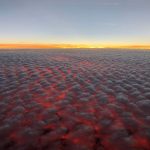Key Takeaways:
- Breakthrough Starshot aims to send a probe to Alpha Centauri, our nearest star system, in just 20 years.
- They plan to use an innovative propulsion system involving a light sail and Earth-based lasers.
- Current ion thruster technology would take around 18,000 years to reach Alpha Centauri.
- The spacecraft will capture images and data from Alpha Centauri, offering insights into distant worlds.
- The project relies on cutting-edge technologies, including a massive laser array and precise guidance systems.
Breakthrough Starshot, an ambitious international scientific initiative, has unveiled a groundbreaking plan to dispatch a probe to Alpha Centauri, our nearest neighboring star system, with the astounding capability to reach its destination in a mere two decades. This monumental undertaking entails the development and testing of an entirely new form of spacecraft propulsion, utilizing a combination of a light sail and an array of laser beams to achieve the colossal speeds necessary for interstellar travel, as reported by the Australian National University (ANU).
To put the magnitude of this journey into perspective, Alpha Centauri lies four light-years away from us, equivalent to a staggering 40,208,000,000,000 miles. Presently, the fastest and most reliable technology for long-range space travel is the ion thruster, exemplified by NASA’s DART mission, which cruises at 15,000 mph. However, utilizing an ion thruster, NASA estimates it would require an astonishing 18,000 years or roughly 2,700 human generations to reach Alpha Centauri.
In stark contrast, the Breakthrough Starshot team asserts that their spacecraft can accomplish this feat within two decades with the assistance of Earth-based lasers. If successful, this probe will capture and transmit the initial images from another solar system, providing us with a rare glimpse of distant Earth-like worlds.
The ANU research team, who are dedicated to making travel to Alpha Centauri a reality, are constructing a small probe equipped with a light sail driven by an Earth laser array. An interstellar laser array will converge millions of beams onto the sail, propelling it at mind-boggling speeds.
Dr. Bandutunga from the ANU Center for Gravitational Astrophysics’ Applied Metrology Laboratories emphasizes the necessity of innovative thinking to bridge the gap between Alpha Centauri and our solar system. He explains, “Once on its way, the sail will traverse the vacuum of space for 20 years before reaching its destination. During its flyby of Alpha Centauri, it will record images and scientific measurements which it will broadcast back to Earth.”
The success of Breakthrough Starshot hinges on the evolution of various critical technologies. The feasibility of lightsails was recently demonstrated by LightSail 2, which utilized solar radiation for propulsion. The most challenging aspect remains the ANU team’s cutting-edge laser array plan, requiring millions of precisely synchronized lasers. To counter atmospheric distortion, they propose a ‘guide laser’ satellite in Earth’s orbit and advanced algorithms for pre-correcting the laser array’s light.
Dr. Bandutunga underlines the next steps, involving testing fundamental components in controlled laboratory environments. The ANU team’s contribution is part of a broader global partnership, under the umbrella of Yuri Milner’s Breakthrough Initiatives, which seeks to discover life beyond our solar system. If the lightsail prototype proves successful, humanity may witness a historic journey to the planets around Alpha Centauri within our lifetime, propelling us into the realm of interstellar exploration.
Breakthrough Starshot, an ambitious international scientific initiative, has unveiled a groundbreaking plan to dispatch a probe to Alpha Centauri, our nearest neighboring star system, with the astounding capability to reach its destination in a mere two decades. This monumental undertaking entails the development and testing of an entirely new form of spacecraft propulsion, utilizing a combination of a light sail and an array of laser beams to achieve the colossal speeds necessary for interstellar travel, as reported by the Australian National University (ANU).
To put the magnitude of this journey into perspective, Alpha Centauri lies four light-years away from us, equivalent to a staggering 40,208,000,000,000 miles. Presently, the fastest and most reliable technology for long-range space travel is the ion thruster, exemplified by NASA’s DART mission, which cruises at 15,000 mph. However, utilizing an ion thruster, NASA estimates it would require an astonishing 18,000 years or roughly 2,700 human generations to reach Alpha Centauri.
In stark contrast, the Breakthrough Starshot team asserts that their spacecraft can accomplish this feat within two decades with the assistance of Earth-based lasers. If successful, this probe will capture and transmit the initial images from another solar system, providing us with a rare glimpse of distant Earth-like worlds.
The ANU research team, who are dedicated to making travel to Alpha Centauri a reality, are constructing a small probe equipped with a light sail driven by an Earth laser array. An interstellar laser array will converge millions of beams onto the sail, propelling it at mind-boggling speeds.
Dr. Bandutunga from the ANU Center for Gravitational Astrophysics’ Applied Metrology Laboratories emphasizes the necessity of innovative thinking to bridge the gap between Alpha Centauri and our solar system. He explains, “Once on its way, the sail will traverse the vacuum of space for 20 years before reaching its destination. During its flyby of Alpha Centauri, it will record images and scientific measurements which it will broadcast back to Earth.”
The success of Breakthrough Starshot hinges on the evolution of various critical technologies. The feasibility of lightsails was recently demonstrated by LightSail 2, which utilized solar radiation for propulsion. The most challenging aspect remains the ANU team’s cutting-edge laser array plan, requiring millions of precisely synchronized lasers. To counter atmospheric distortion, they propose a ‘guide laser’ satellite in Earth’s orbit and advanced algorithms for pre-correcting the laser array’s light.
Dr. Bandutunga underlines the next steps, involving testing fundamental components in controlled laboratory environments. The ANU team’s contribution is part of a broader global partnership, under the umbrella of Yuri Milner’s Breakthrough Initiatives, which seeks to discover life beyond our solar system. If the lightsail prototype proves successful, humanity may witness a historic journey to the planets around Alpha Centauri within our lifetime, propelling us into the realm of interstellar exploration.


